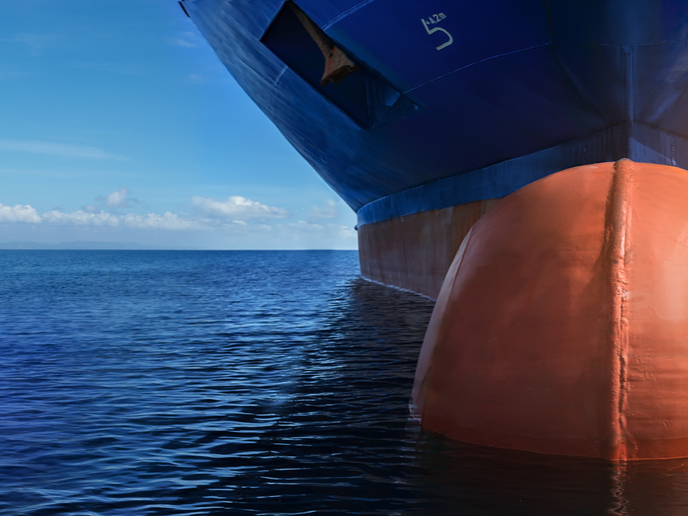A big step forward for ship remote inspection technologies
Different types of RITs were recently tested on a double-skin supramax bulk cargo carrier owned by Greek shipper Oceanbulk Maritime. The testing was carried out by Belgian certification company Bureau Veritas that established proof of concept and confirmed the operational purpose of the remote tools. Greek technical services specialist Glafcos Marine provided and operated the RITs, which included an aerial drone, magnetic crawlers and a miniature remotely operated vehicle (ROV). Glafcos Marine is a partner in the EU-funded BugWright2 project working to bring RITs closer to market.
Inspecting ship holds, structure and tanks
The inspection took place during the bulk cargo carrier’s recent visit to the Neorion shipyard on the island of Syros, Greece, for work on the stern requiring a specific ballast condition. The miniature ROV was used to perform the underwater inspections of flooded tanks, eliminating the need for deballasting. Additionally, the holds and structure were examined by the aerial drone and magnetic crawlers equipped with ultrasonic thickness measurement (UTM) sensors. These two technologies saved time and money by rendering cherry pickers (cranes with platforms attached to the end), staging and rope access unnecessary. By moving across both vertical and inverted planes, the drones and crawlers also provided the steadiness needed for close-up pictures and UTM readings. Paillette Palaiologou, Vice President Hellenic, Black Sea & Adriatic Zone for Bureau Veritas, was impressed by the results. “The quality, resolution and detail of the imagery are excellent. We also now have a better understanding for the potential to combine, for example, drones and crawlers. We can make an initial overall survey with a drone – even in harder to reach areas, such as cross deck penetrations, as we did in this case. In addition, if closer examination is deemed necessary a crawler can be used for more detailed imagery,” she reported in a news item posted on ‘Hellenic Shipping News Worldwide’. Palaiologou went on to explain why such RITs are important: “They help with accuracy, speed and record-keeping in all conditions. Our surveyors and clients will increasingly be able to focus on analysing the information and data acquired – with greater safety, at greater overall speed and at less expense, rather than the challenges of acquiring what we need to know.” Oceanbulk Maritime’s Milena Pappas commented on the RIT testing: “During the tests on site, it was evident that robotic services could be a very useful and efficient tool, especially in difficult areas (upper parts of cargo holds) and during adverse conditions (full ballast tanks). By utilizing drones and ROVs, all close up inspections and UTM could be completed in a much safer, efficient and quicker way.” This effort furthers the BugWright2 (Autonomous Robotic Inspection and Maintenance on Ship Hulls and Storage Tanks) project’s goal to change the European landscape of robotics for infrastructure inspection and maintenance. Glafcos Marine co-founder and managing director Leonidas Drikos described Bureau Veritas’ testing initiative as “a big step, actually the biggest so far, towards shifting ship inspections from purely human to combined human-robot execution.” For more information, please see: BugWright2 project website
Keywords
BugWright2, ship, cargo carrier, remote inspection, drone, magnetic crawler, remotely operated vehicle, robotics



